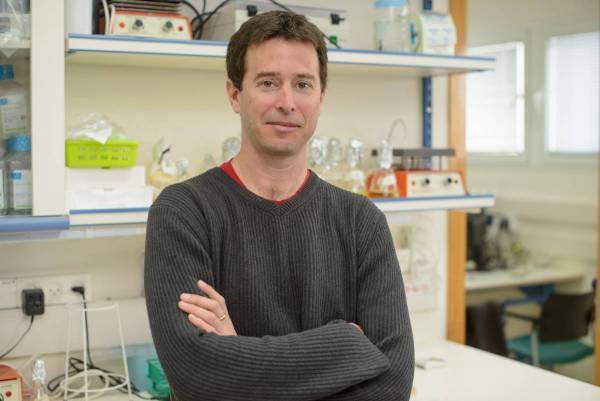Le Figaro. Hatzerim-Netafim (Israël), le kibboutz des princes du goutte-à-goutte

[:fr]Le Figaro. En Israël, les membres d’un kibboutz sont devenus des millionnaires en puissance grâce à un système d’irrigation d’une efficacité hors pair.
«Contrairement à Utopia de Thomas More, personne n’a écrit “Kibboutz”», plaisante dans un anglais impeccable Chelo Tunik, membre depuis 48 ans du kibboutz Hatzerim. «Il y aurait pourtant beaucoup à raconter. Hatzerim, par exemple, est l’un des kibboutz les plus difficiles à intégrer et l’un des plus demandés : il faut au moins dix-huit mois pour avoir une chance d’être admis». Pourtant en cette fin d’hiver, la chaleur est déjà lourde et le calme est troublé régulièrement par d’assourdissants avions de chasse qui survolent ce site verdoyant. Située dans le désert du Néguev en Israël, à une dizaine de kilomètres de Beer-Shev’a, cette communauté suscite de nombreuses vocations. Et pour cause: ses 500 membres sont des millionnaires en puissance.
Ici a été mis au point un système d’irrigation qui permet d’économiser jusqu’à 50 % de la consommation d’eau par rapport aux systèmes concurrents. Une performance qui s’explique par la forme aérodynamique de petits tubes en polyéthylène adaptée à toutes les cultures et les terrains. «Les premiers ressemblaient à de simples spaghettis enroulés dans un tube que nous coupions à la longueur désirée pour avoir une pression constante à la sortie et un écoulement laminaire, explique Chelo Tunik. Au fil des ans, nous avons élaboré des systèmes plus élaborés, adaptés notamment aux terrains en pente». Dans le berceau de l’entreprise, à Hatzerim, une usine emploie plus de 100 membres de la communauté pendant huit jours complets et 24 heures sur 24.
«Ici, la terre et l’eau sont salées»
Spécialisée dans le goutte-à-goutte pour l’agriculture, la société Netafim a été créée à Hatzerim en 1965. «À l’époque, nous étions le cinquième kibboutz visité par Simcha Blass, un ingénieur d’origine allemande, à l’origine de l’idée de la micro-irrigation, raconte Natan Barak, directeur commercial de Netafim. Il avait tenté en vain de la proposer ailleurs. Mais ici, la terre et l’eau sont salées et nous avions peu d’activité à l’époque».
En 2011, le fonds d’investissement Permira a acquis 61 % du capital de Netafim, sur la base d’une valorisation de 900 millions de dollars. À présent, le kibboutz conserve 33 % du capital de Netafim qui a 19 usines dans le monde, dont 3 en Israël, et compte plus de 4 000 salariés. «Nous sommes son ADN, affirme le directeur commercial pour justifier que Hatzerim ait conservé une participation. Nous pourrons vendre le solde à un prix plus élevé».
Et le kibboutz possède une autre richesse : l’huile de jujubes. «Nous avons commencé il y a près de vingt-cinq ans, à cultiver des jujubiers, importés du Mexique, adaptés à cette terre aride, rappelle Chelo Tunik. Nous pensions, au départ, en extraire une huile pour la mécanique. Mais l’industrie des cosmétiques achète toute notre production».
L’auteur, Marc Cherki, est journaliste au Figaro. Il est membre de l’AJE, Association française des Journalistes de l’Environnement.
—————————-
A lire également : Magal: A Modern Israeli Kibbutz
Kibbutz Magal was founded in 1953 in the northern Sharon area and located adjacent to the Green Line. The kibbutz is known for its avocados and olives and for the highest quality olive oil produced mostly for the export market .Magal is home to approximately 1200 people living in comfortable attractive homes.
The award winning olive oil from Kibbutz Magal is cold pressed and extracted exclusively from the well cared for orchards and optimal soil and climate conditions of Emek Hefer, Israel’s historic land of olive oil. The groves cover more than 300 acres and are considered to be amongst the best in the country. Only a short time passes from harvest until the olives are pressed and stored under optimal temperature and humidity. The kibbutz developed a unique technology of shaking the trees and harvesting from the top of the trees downward. By contrast the local Arab farmers require 10 times the man labor hours to harvest an equal crop.
Also on the grounds of the kibbutz is world known Netafim an Israeli pioneer in drip irrigation technology. The company was founded by three kibbutzim in the 1960’s one in the north, Magal in the center and a third in the Negev. In 1966 it introduced the world’s first commercial dripper. In 1978 it introduced the world’s first pressure compensated dripper and in 1981 opened its first subsidiary outside of Israel. Today Netafim maintains 28 subsidiaries and 16 plants worldwide and employs 4000 people. The company’s website says, “Grow More With Less” and Netafim provides irrigation and greenhouse technologies around the world an example of how Israeli technology helps make the world a better place.
Roaming about the kibbutz one will find extensive stables for scores of horses and kennels for dogs. At the stables children with mild disabilities are seen caring for the animals.
One can hear the local muezzin’s call to prayer from the kibbutz but relations between the local Israel Arab residents with the kibbutzniks have always been good because it’s just good for business.
[:en]Hatzerim was one of the first kibbutzim (pl.) to break the mould from traditional agriculture and start a business. Netafim is the kibbutz business that started in 1965, that designs, manufactures and distributes irrigation systems. The business is also run with two other kibbutzim, Magal and Yiftach. There are also factories around the world, California, USA, South Africa, Western Australia and more. Netafim soon became a world leader in their field as a multinational corporation that grosses over $300 million a year.
Source wikipedia
In Kibbutz Hatzerim, where Netafim introduced drip irrigation 45 years ago, we irrigate a 400-hectare plot of Jojoba, with our subsurface drip irrigation system. The plot utilizes one dripperline per row of plants, and the drippers are spaced one meter apart from each other. The water used for irrigation is recycled wastewater from the Kibbutz and from Beer Sheva, a nearby city. This means that not only have the drippers been buried underground for over 10 years; the water that passes through them is quite challenging and prone to clogging.
Thanks to Netafim’s special labyrinth structure (Turbonet™) and anti-siphon mechanism, the system has not been clogged and is today as accurate as on day one. Netafim’s pressure compensated drippers (PC) and dripperlines feature continuously self-cleaning, thus avoiding clogging.
There are several algorithms built into the little dripper, ensuring that:
- Pressure regulating mechanism ensures that each dripper provides the same flow, regardless of inlet pressure.
- Each dripper has a built in large filtration area.
- An ongoing cleaning mechanism uses pressure to push out dirt particles.
- Mechanical root barrier prevents root intrusion
- Anti-siphon mechanism prevents suction of dirt particles
- Non Leakage mechanism keeps the water in the system once it is shut and prevents uneven drainage
- Membrane, structure and materials that withstand chemicals, acid and extreme climate conditions
These algorithms are protected by several patents registered all over the world. With Netafim, the grower can enjoy the benefits of drip irrigation that were discussed in the panel, without any of the drawbacks that were presented.
Source Netafim
Read also: Magal: A Modern Israeli Kibbutz
Kibbutz Magal was founded in 1953 in the northern Sharon area and located adjacent to the Green Line. The kibbutz is known for its avocados and olives and for the highest quality olive oil produced mostly for the export market .Magal is home to approximately 1200 people living in comfortable attractive homes.
The award winning olive oil from Kibbutz Magal is cold pressed and extracted exclusively from the well cared for orchards and optimal soil and climate conditions of Emek Hefer, Israel’s historic land of olive oil. The groves cover more than 300 acres and are considered to be amongst the best in the country. Only a short time passes from harvest until the olives are pressed and stored under optimal temperature and humidity. The kibbutz developed a unique technology of shaking the trees and harvesting from the top of the trees downward. By contrast the local Arab farmers require 10 times the man labor hours to harvest an equal crop.
Also on the grounds of the kibbutz is world known Netafim an Israeli pioneer in drip irrigation technology. The company was founded by three kibbutzim in the 1960’s one in the north, Magal in the center and a third in the Negev. In 1966 it introduced the world’s first commercial dripper. In 1978 it introduced the world’s first pressure compensated dripper and in 1981 opened its first subsidiary outside of Israel. Today Netafim maintains 28 subsidiaries and 16 plants worldwide and employs 4000 people. The company’s website says, “Grow More With Less” and Netafim provides irrigation and greenhouse technologies around the world an example of how Israeli technology helps make the world a better place.
Roaming about the kibbutz one will find extensive stables for scores of horses and kennels for dogs. At the stables children with mild disabilities are seen caring for the animals.
One can hear the local muezzin’s call to prayer from the kibbutz but relations between the local Israel Arab residents with the kibbutzniks have always been good because it’s just good for business.
[:]






